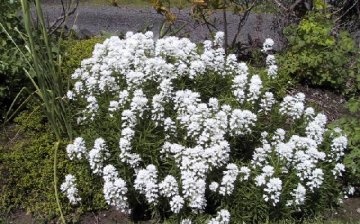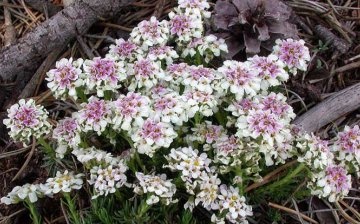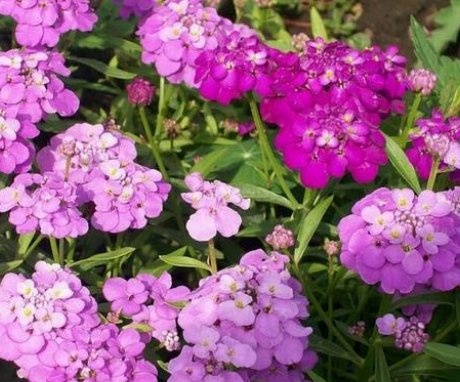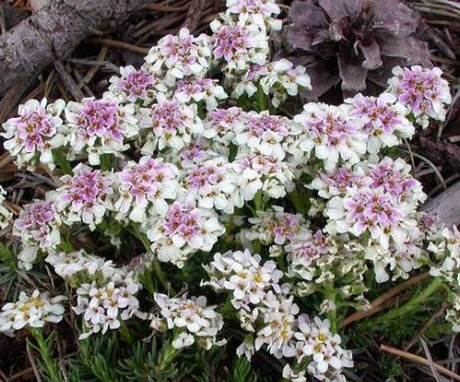Growing Iberis is simple and beautiful
Most likely, many of us are more familiar with the simple names of a lush flowering bush - stennik, variegated, peppercorn. But how beautiful his real name sounds - Iberis. Long ago, when Spain was still ancient Iberia, this plant was unusually widespread in its territory. Due to its beauty, it quickly spread in Western Europe and Asia. Nowadays, this beautiful shrub of the cruciferous or cabbage family has spread to all countries with a temperate climate.
Content:
- Iberis - simple yet graceful beauty in the garden
- The specifics of growing and caring for Iberis
- External threats to magnificent Iberis
Iberis - simple yet graceful beauty in the garden
It is long enough to list all types of Iberis - at the moment 40 names are known and studied, among which the most popular are Iberis:
- bitter;
- umbrella;
- Gibraltarian;
- rocky;
- pinnate.
This plant exists in a wide variety of forms. There are annuals and perennials, herbaceous and semi-shrubs that withstand the cold well and, conversely, thermophilic ibers. This is a very dense shrub, the stems of which may slightly creep along the ground or be erect. The plant reaches a height of 50 cm, the bush often grows up to a meter or more in diameter.
Lanceolate leaves are sometimes lacquered and shiny with a very beautiful saturated green color. And the most important decoration of this plant is the umbrella inflorescences, which are simply indescribably diverse and beautiful. They are pink, white, burgundy, purple, creamy, beige, lilac. Iberis blooms for about two months - from May to July.
As for its place in the garden, there are very few restrictions. Most often, Iberis saxatilis is grown for decoration. This magnificent view is beautifully located on alpine coaster, flower beds, improvised meadows.
And also, due to its structure, Iberis grows well in potted forms on windowsills. There is another nice feature in this plant - it looks very beautiful in bouquets, especially wedding bouquets. Florists really appreciate its somewhat primitive unusual charm.
The specifics of growing and caring for Iberis
Despite their uniqueness and beauty, Iberis does not require complex actions neither in sowing, nor in care, nor in cultivation. The main condition for a prosperous, one might say, exuberant color is a sufficient amount of sunlight.
If we talk about the specifics of the soil for cultivation, then almost all types of soil are suitable here:
- rocky;
- loamy;
- sandy.
Absolutely any will do the soil, if only it has a high permeability to air masses.
Almost all types of Iberis are sown directly into the ground. It is best to do this in April, after 1.5-2 weeks the first shoots will appear. At this stage, it is imperative to carry out thinning so that the remaining shoots are at a distance of at least 15 cm from each other.
As already mentioned, Iberis blooms for a little over two months, so if you want to enjoy its appearance longer, then you should do the sowing in stages with a difference of 6-10 days. In this case, flowering will be continuous throughout the summer.
There are other options for planting this beautiful plant:
- Sow seeds on seedlings in March.With this method, in a potted container, the seeds are buried 1-2 cm and in May, shoots are planted directly into the ground. In this case, unexpected frosts are not terrible.
- The method of reproduction by five centimeters is also interesting. cuttingsobtained from the shoots in which the flowering has ended. Cuttings are grown in a greenhouse method under a film using phytohormones. These cuttings are planted in open ground no earlier than next spring.
Taking into account the fact that when growing Iberis in a garden, where insects are engaged in pollination of all plants, it is necessary to observe isolation in space for each type of flowers. Otherwise, you risk becoming the owner of a garden of hybrid novelties.
External threats to magnificent Iberis
It is a mistake to think that only weather troubles threaten plants outdoors.
Iberis, like any other plant, requires not only fertilization and watering, but also protection from pests and diseases.
- The main "Achilles' heel" of this plant is its roots. They are susceptible to such an unpleasant fungal disease as cabbage or cruciferous keels (Plasmodiophora brassicae). This fungus spoils and deforms the root system, which leads to a weakening of the vital activity of the Iberis, and then to death.
- The inflorescences are affected by the mushroom rhizoctonia (Pellicularia filamentosa). In both cases, soil disinfection and the mandatory removal of diseased plants are required. The soil should be disinfected as a preventive measure.
- Of pests Iberis is afraid of mealybug and cabbage aphid. Treatment with anticoccidal agents from the former and a soap-ash solution from the latter, is quite sufficient protection for your beloved flower.
This magnificent plant also has an incomparable aroma. If you plant Iberis once in your garden or on your balcony, then in the future you will always include it in the list of your favorite and must-have flowers. Its beauty, unpretentiousness in cultivation and care are the main reasons for planting. Enjoy the beauty of ancient Iberia, feel its aroma and identity, which lies in the flowers of the Iberis.













